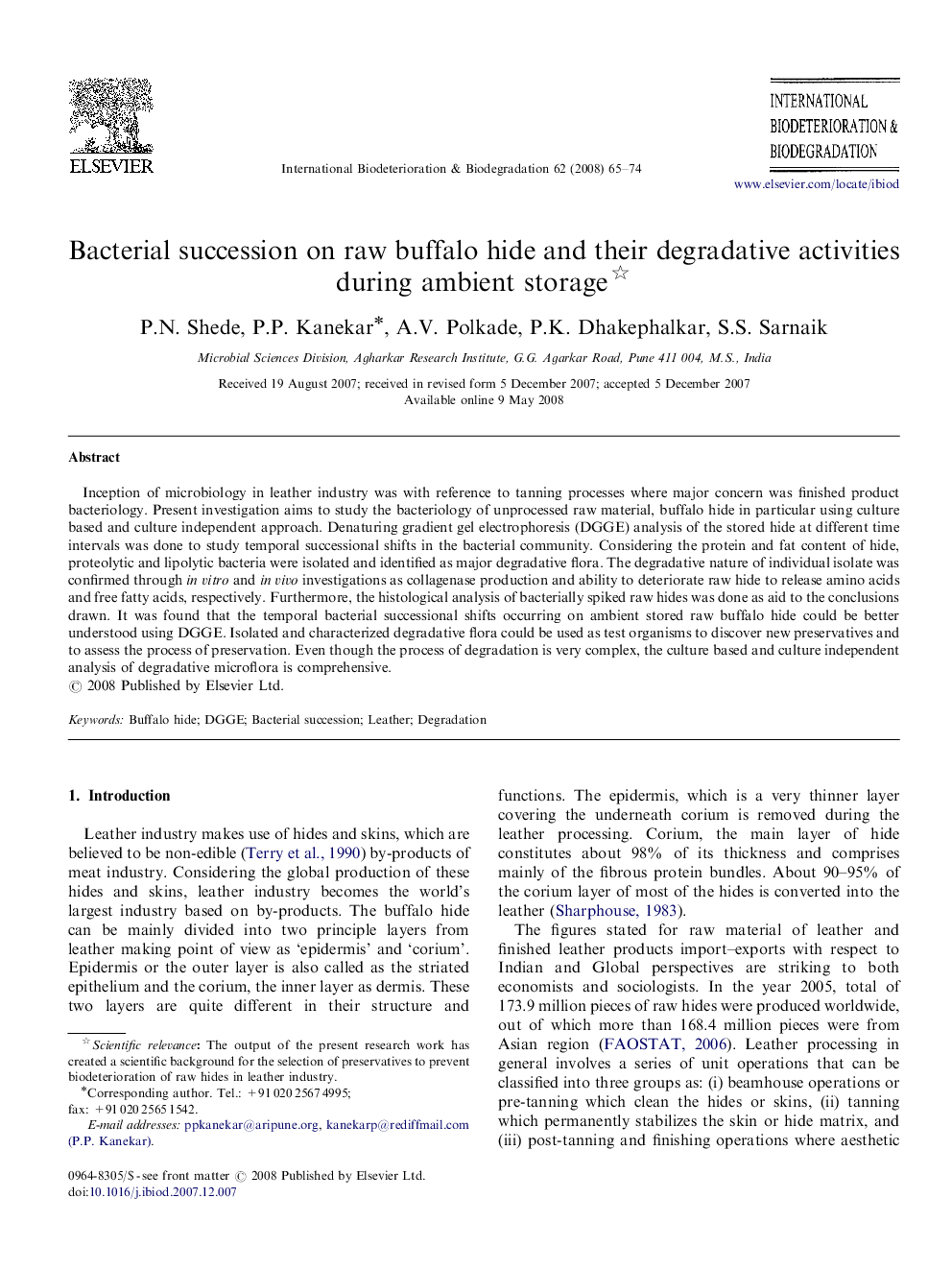| Article ID | Journal | Published Year | Pages | File Type |
|---|---|---|---|---|
| 4365516 | International Biodeterioration & Biodegradation | 2008 | 10 Pages |
Abstract
Inception of microbiology in leather industry was with reference to tanning processes where major concern was finished product bacteriology. Present investigation aims to study the bacteriology of unprocessed raw material, buffalo hide in particular using culture based and culture independent approach. Denaturing gradient gel electrophoresis (DGGE) analysis of the stored hide at different time intervals was done to study temporal successional shifts in the bacterial community. Considering the protein and fat content of hide, proteolytic and lipolytic bacteria were isolated and identified as major degradative flora. The degradative nature of individual isolate was confirmed through in vitro and in vivo investigations as collagenase production and ability to deteriorate raw hide to release amino acids and free fatty acids, respectively. Furthermore, the histological analysis of bacterially spiked raw hides was done as aid to the conclusions drawn. It was found that the temporal bacterial successional shifts occurring on ambient stored raw buffalo hide could be better understood using DGGE. Isolated and characterized degradative flora could be used as test organisms to discover new preservatives and to assess the process of preservation. Even though the process of degradation is very complex, the culture based and culture independent analysis of degradative microflora is comprehensive.
Related Topics
Life Sciences
Environmental Science
Environmental Science (General)
Authors
P.N. Shede, P.P. Kanekar, A.V. Polkade, P.K. Dhakephalkar, S.S. Sarnaik,
